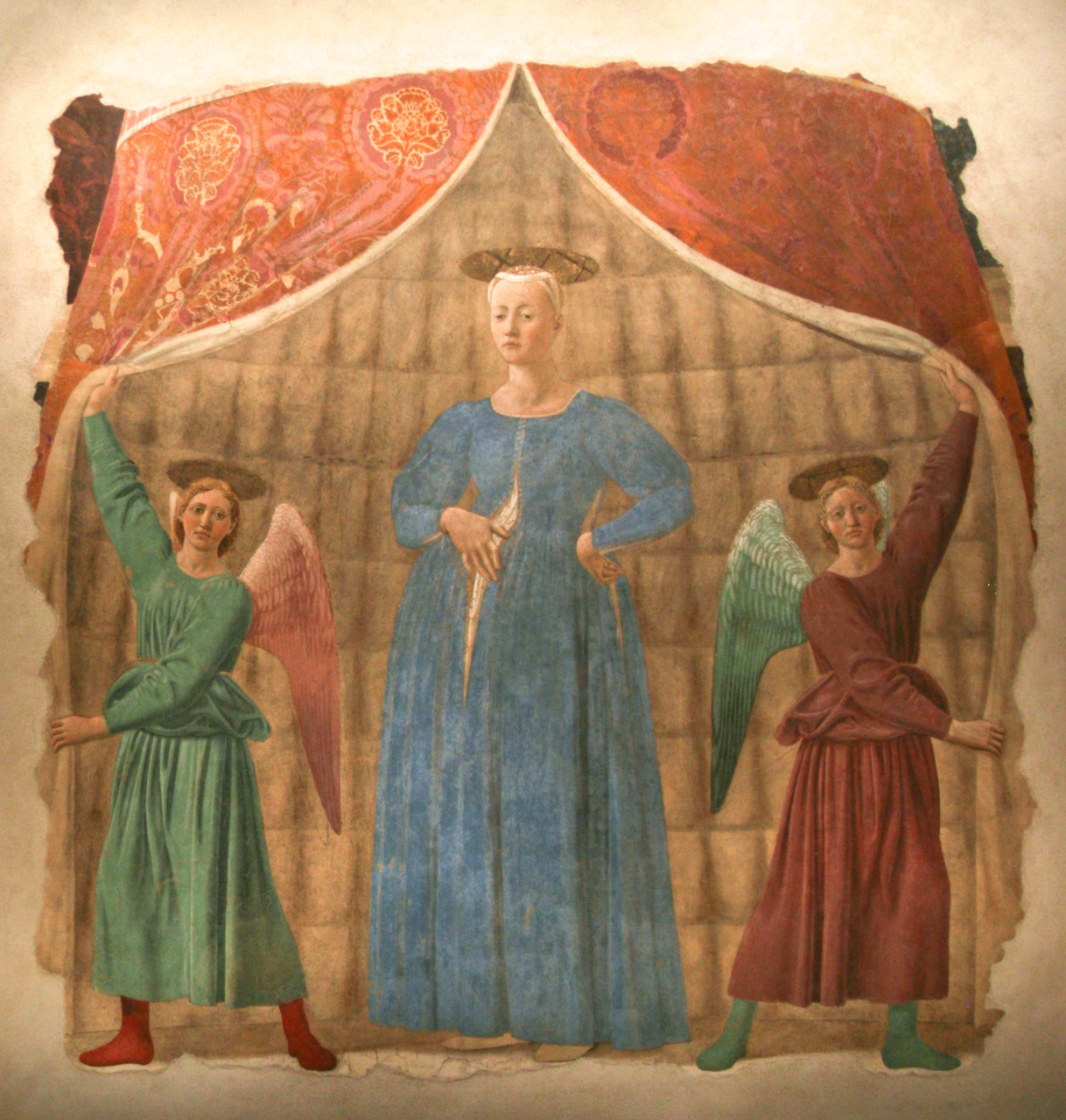
LIFE AS MYTH
![]()
JOURNAL
![]()
LIFEWORKS
![]()
ATLAS
![]()

SUMMER 2014
MADONNA DEL PARTO

Madonna del Parto. Piero della Francesca. ca. 1459. Museo della Madonna del Parto, Monterchi. (below) Photograph of a Buddhist sculpture showing the birth of Buddha, from Lorian Tangai, taken by Alexander Caddy in 1896.
Madonna del parto [Madonna of childbirth] is a fresco painting by Piero della Francesca, completed in seven days while the artist was in Sansepolcro for his mother's death [1459]. The motif of Madonna del Parto is one found in Tuscan art beginning in the 14th C. In these paintings, the Madonna usually stands alone and holds a closed book over her belly, signifying her embodiment of the incarnate word. Here Francesca reveals her within a pavilion, with two angels opening its panels. This opening is then mirrored in the panels of the Virgin Mary's robes. One interpretation describes the pavilion as representing the original Ark of the Covenant. In this context, the pregnant mother of Christ then becomes the vessel for the new covenant.
The painting features a liberal amount of blu oltremare, also known as ultramarinum [beyond the sea], obtained from imported lapis lazuli. Popular with Italian painters in the fourteenth and fifteenth centuries, blu oltermare was also very expensive, at times exceeding gold in cost. Artists were sparing in their use of it, reserving the color for the robes of the Virgin Mary and the Christ child.
The Hindu tradition of THE BIRTH OF BUDDHA (Prince Siddhārtha) teaches that his mother stood upright and held on to a branch during delivery. The infant Buddha emerged from her side, took seven steps, and said that he would achieve enlightenment and end all suffering in the world.
Throughout his childhood and into young adutlhood, his father the king sheltered him from all hardship. It was not until he was twenty-nine that a pivotal encounter changed the course of his life. Prince Siddhārtha went out to meet with his subjects. Until this day his father had barred all sick and aging people from the royal audiences. On this occasion, however, the prince looked into the face of an old man for the first time. This was his first encounter with mortality and suffering. It was also the beginning of a personal pilgrimage that led to his enlightenment at the age of thirty-five.
